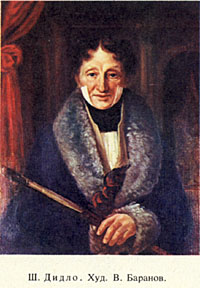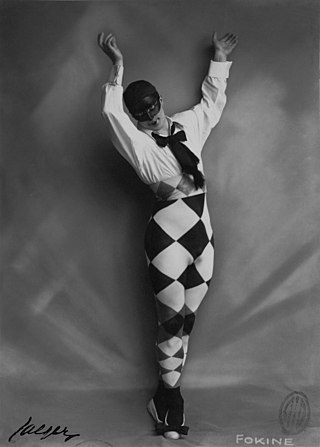
Michael Fokine was a groundbreaking Imperial Russian choreographer and dancer.

Marie Taglioni, Comtesse de Voisins was a Swedish-born ballet dancer of the Romantic ballet era partially of Italian descent, a central figure in the history of European dance. She spent most of her life in the Austrian Empire and France. She was one of the most celebrated ballerinas of the romantic ballet, which was cultivated primarily at Her Majesty's Theatre in London and at the Théâtre de l'Académie Royale de Musique of the Paris Opera Ballet. She is credited with being the first ballerina to truly dance en pointe.

Russian ballet is a form of ballet characteristic of or originating from Russia.

Marius Ivanovich Petipa, born Victor Marius Alphonse Petipa, was a French and Russian ballet dancer, pedagogue and choreographer. Petipa is one of the most influential ballet masters and choreographers in ballet history.

Charles Felix Richard Auguste Le Picq was an influential French dancer and choreographer. One of the most outstanding dancers of the eighteenth century.
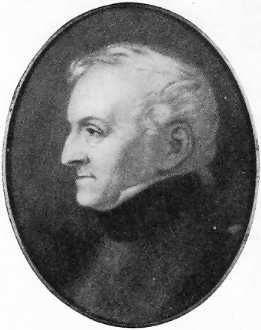
Filippo Taglioni was an Italian dancer and choreographer and personal teacher to his own daughter, Romantic ballerina Marie Taglioni. Also, although August Bournonville's version is better known, it was Taglioni who was the original choreographer of La Sylphide, in 1832.

La Fille mal gardée is a comic ballet presented in two acts, inspired by Pierre-Antoine Baudouin's 1765 painting, La réprimande/Une jeune fille querellée par sa mère. The ballet was originally choreographed by the Ballet Master Jean Dauberval to a pastiche of music based on fifty-five popular French airs. The ballet was premiered on 1 July 1789 at the Grand Théâtre de Bordeaux in Bordeaux, France under the title Le ballet de la paille, ou Il n'est qu'un pas du mal au bien.

Pavel Andreyevich Gerdt, also known as Paul Gerdt, was the Premier Danseur Noble of the Imperial Ballet, the Bolshoi Kamenny Theatre, and the Mariinsky Theatre for 56 years, making his debut in 1860, and retiring in 1916. His daughter Elisaveta Gerdt was also a prominent ballerina and teacher.
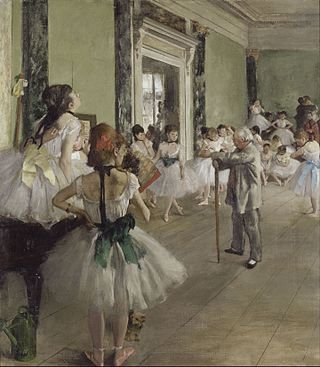
A ballet master is an employee of a ballet company who is responsible for the level of competence of the dancers in their company. In modern times, ballet masters are generally charged with teaching the daily company ballet class and rehearsing the dancers for both new and established ballets in the company's repertoire. The artistic director of a ballet company, whether a male or female, may also be called its ballet master. Historic use of gender marking in job titles in ballet is being supplanted by gender-neutral language job titles regardless of an employee's gender.
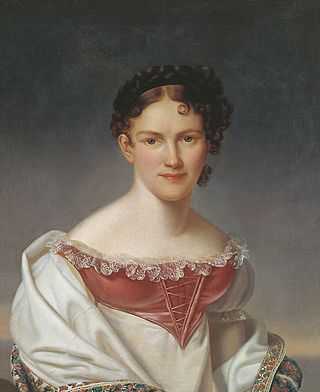
Evdokia or (informally) Avdotia Ilyinichna Istomina was the most celebrated Russian Empire ballerina of the 19th century.

Jules-Joseph Perrot was a dancer and choreographer who later became Ballet Master of the Imperial Ballet in St. Petersburg, Russia. He created some of the most famous ballets of the 19th century including Pas de Quatre, La Esmeralda, Ondine, and Giselle with Jean Coralli.

Catterino Albertovich Cavos was an Italian composer, organist and conductor who settled in Russia. He played an important role in the history of Russian opera and was the father of Alberto Cavos.

Pehr Christian Johansson was a teacher, choreographer and balletmaster for the Russian Imperial Ballet. He was engaged at the Royal Swedish Ballet in 1829-41, and at the Imperial Russian Ballet in 1841-66.

Le Réveil de Flore, is a ballet anacréontique in one act, with choreography by Marius Petipa and music by Riccardo Drigo, to a libretto written by Petipa and Lev Ivanov. First presented by the Imperial Ballet at Peterhof Palace on 6 August [O.S. 25 July] 1894.
Sophie Marguerite Daguin was a French ballet dancer and choreographer. She spent her career in Sweden, where she became a star ballerina and ballet mistress of the Royal Swedish Ballet, and the principal of the ballet school.
Louis-Antoine Duport was a French ballet dancer, ballet composer and ballet master.
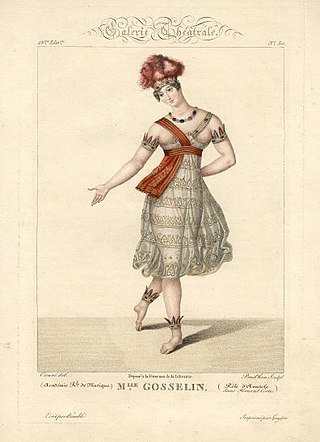
Geneviève-Adélaïde Gosselin was a French ballet dancer known for being the first dancer en pointe.
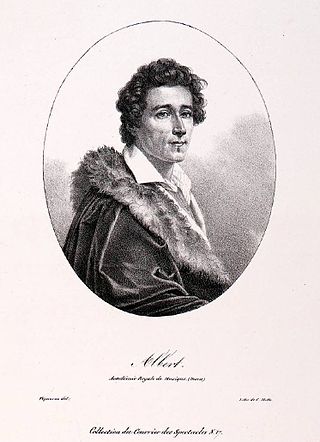
François-Ferdinand Decombe was a French ballet dancer and ballet master, under the stage name Albert.
Pierre-Frederic Malevergne or Pierre-Frederic Malavergne and Pierre-Frederic Malovergne was a French dancer who worked in Russia. All English-speaking and French-speaking sources call him Malevergne; all Russian-speaking sources call him Malavergne or Malovergne, Russian: Пьер Фредерик Малавернь/Маловернь. The birth name of the dancer name is unknown, he himself preferred to be called by alias Monsieur Frédéric or Frédéric. Of his youth nothing is known.

Eugenia Ivanovna Kolosova, was a Russian Empire ballerina.
